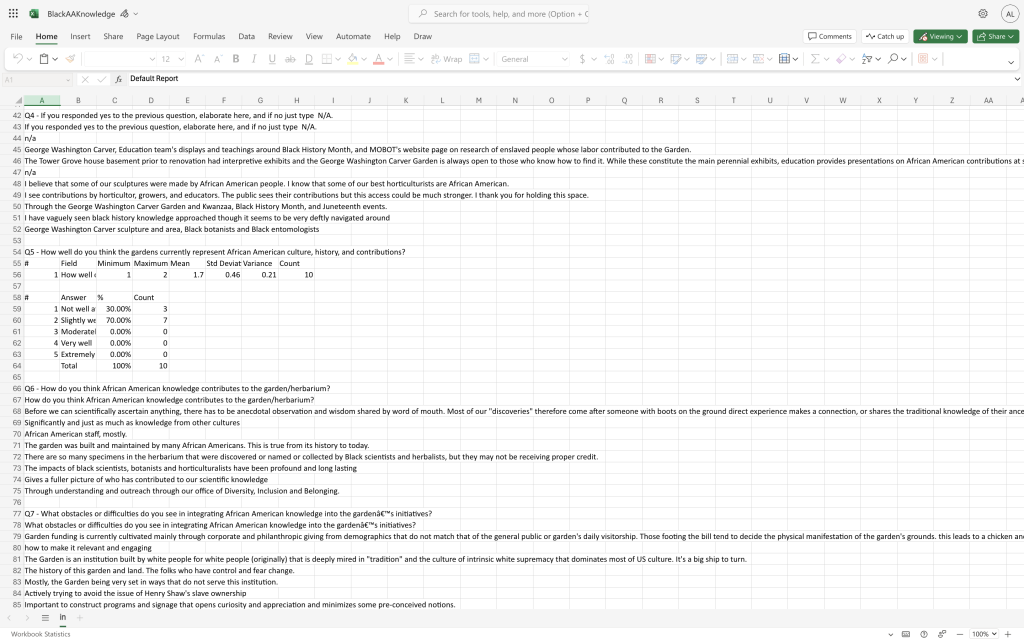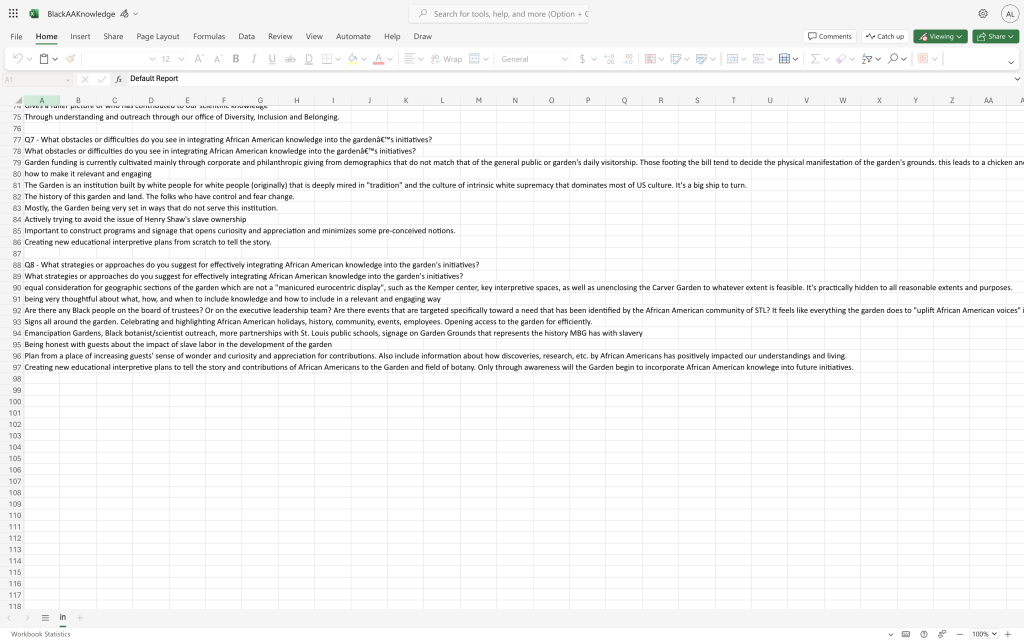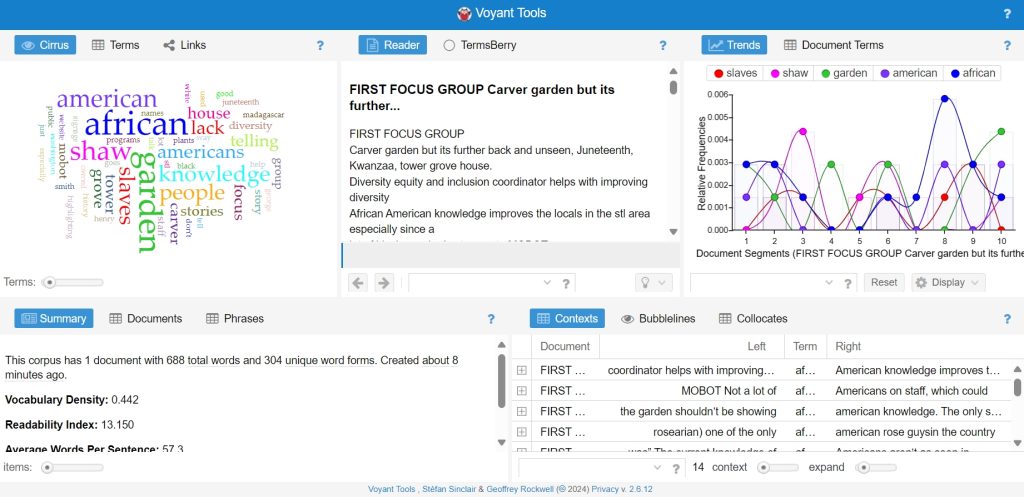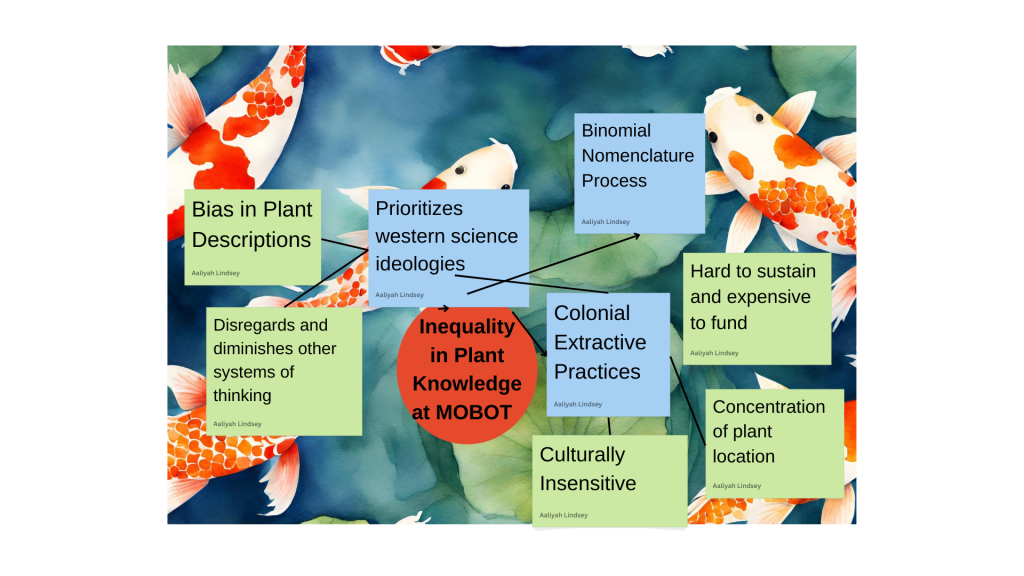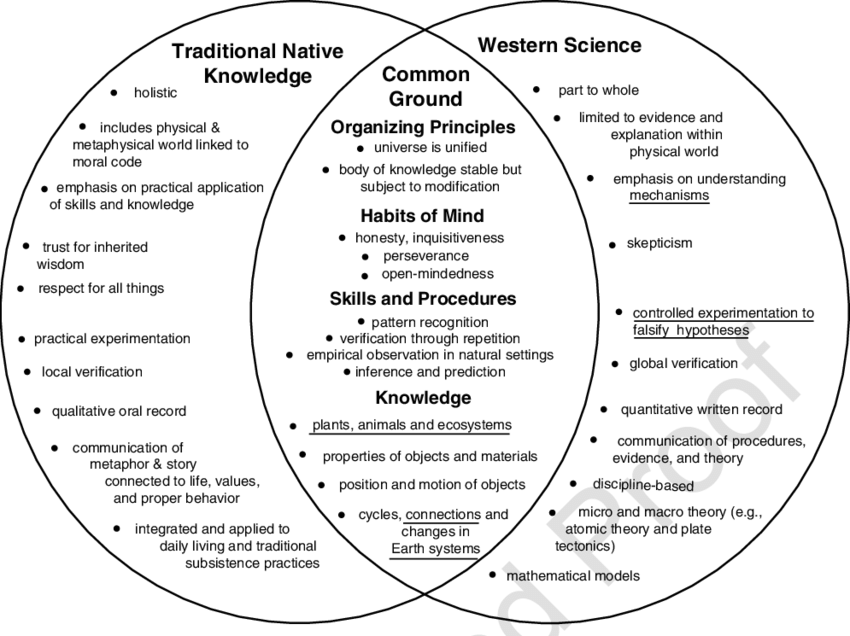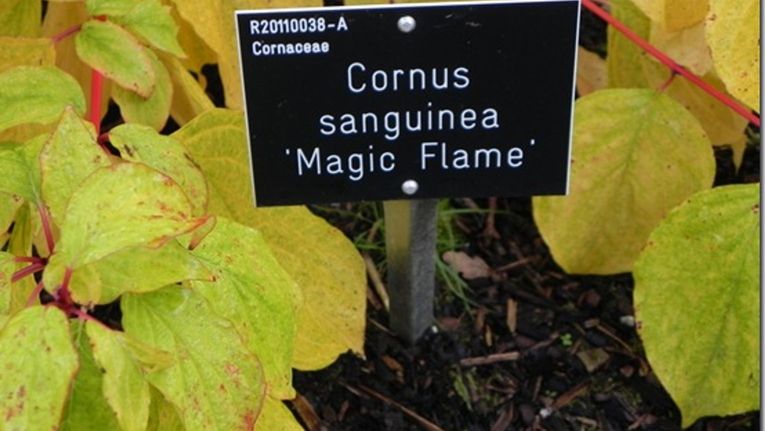Questions about answering the research question:
- What barriers may be problematic?
- What can we accomplish within our allotted time?
- What we will adjust if the plan isn’t feasible?
- How will we make sure our final product is accessible?
Geographic Focus and Stakeholders: Garden Visitors
Data Collection : Focus group questions towards tower grove house tour guides. The goal is to tell the stories of the people who were enslaved there. Getting more access to the archives to see if there’s anything we could use for information about the enslaved.
- How can we bring the aspects of the exhibit from the basement throughout the house?
- How much information do we have and what do we need to tell these stories accurately?
- How much of the house do we have access to in order to make our exhibit?
Implementation:
Section 1: Research Questions Explain what specific problem or issue you are addressing. Be sure to do this work in consultation with your partners. What research questions do you have about the problem? What do you want to test? What can you feasibly act upon?
I’m not sure what research questions we have about the problem that I haven’t covered in the first section. We want to see how we can engage the garden’s visitors in learning about such a heavy topic as slavery. We can feasibly act upon this by connecting more explicitly with the resources availiable to us.
Section 2: Geographic Focus and Stakeholders This could be as specific as the docents at MOBOT or as broad as the Tower Grove Neighborhood. Explain why you have chosen the focus and who your key stakeholders are. Tell us what you know about them and what you still need to know. Explain the role and level of involvement of each stakeholder.
Our group would like to focus on MOBOT visitors to be Stakeholders. We would like to share our knowledge and educate people who visit the garden about the African American history at MOBOT. Our geographic focus would specifically be the house within the garden. We would like to reach out to as many visitors as possible, our involvement is especially important.
Section 3: Data Collection What data do you need to answer your question: secondary research, interviews, surveys, focus groups, oral histories, ethnographies, scientific experiments? Drawing on your experience from your other CODES courses, develop plans for specific data sets that need to be collected. Each member of the team will be responsible for collecting and curating one data set. Raw data should be maintained in a shared drive accessible to the entire team. Determine what data you will need to collect and who will be responsible for the work. For each data collection activity in your plan, consider why you are collecting it, how and from whom you will collect it, and what methods will be most effective.
We will need secondary research, oral histories, and ethnographies.
Secondary Research: Li
Oral Histories: Priscilla/Aydien
Ethnographies: Shelby
**** we still need to answer the HOW****
Section 4: Implementation What will be the outcome of your research? Will you develop an exhibit, engage students in a learning activity, or design a digital project? Why is this the best plan for implementation? What do you need to know to make the implementation successful? How will it meet the needs of your audience? Who will do each part of the work? How will you assess its success?
The outcome of our research would be creating an exhibit that focuses on the lives and experiences of the slaves and African American connected to the house. Visitors will gain a greater understanding of both the everyday events and the difficult circumstances they had to face thanks to this exhibit. Creating this exhibit would give visitors a more direct and immersive way to interact with the history of slavery connected to the garden. I will need more specific information about the particular people who were kept as slaves in the house, as well as an understanding of their day-to-day activities, to successfully execute the plan. Finding out which rooms in the house are available and which ones are not will also be necessary. In order to learn more about the house and obtain the tax information for the slaves, it would be imperative to get in touch with Sean and Robbie. The exhibit’s success will be assessed based on visitor engagement, feedback, and whether it improves visitors’ awareness of African American history in the home.
